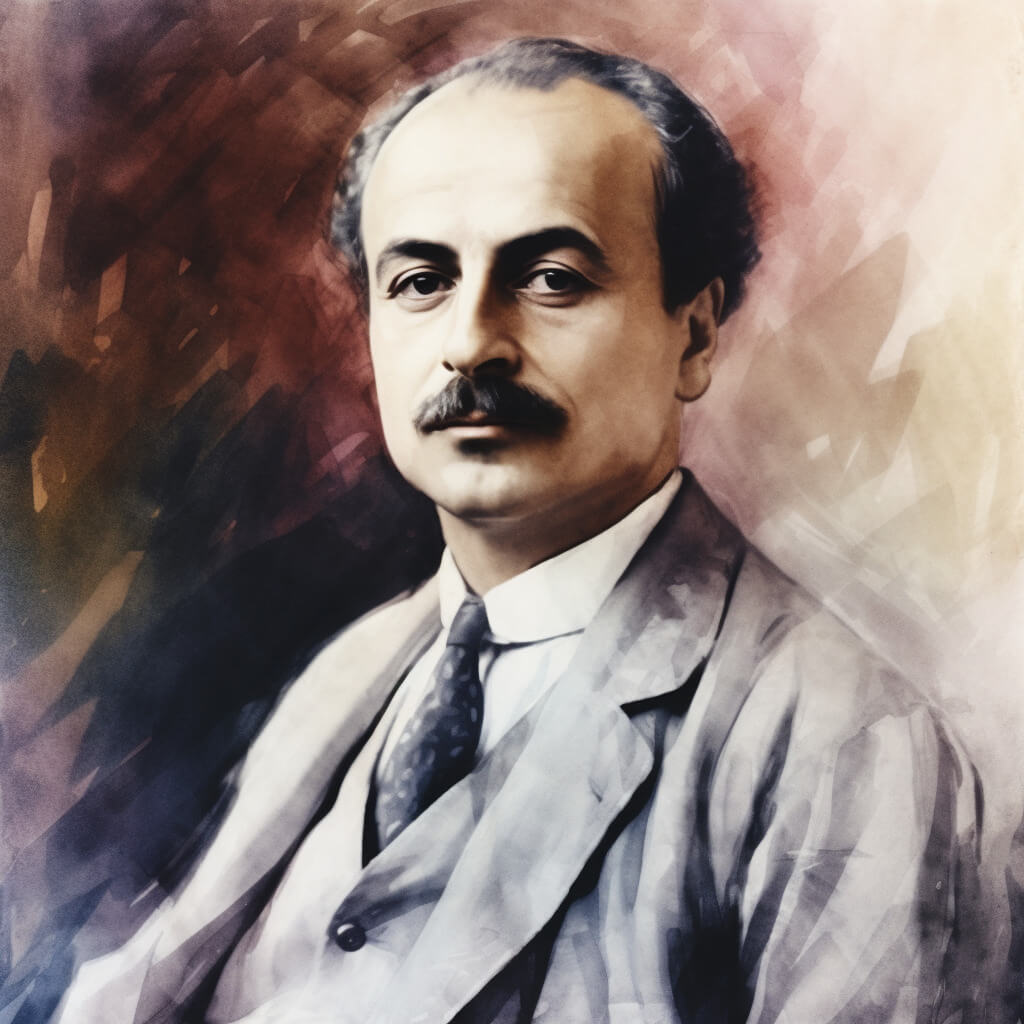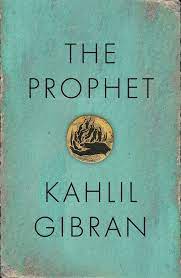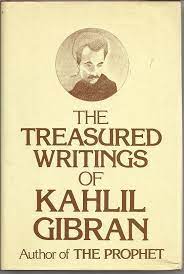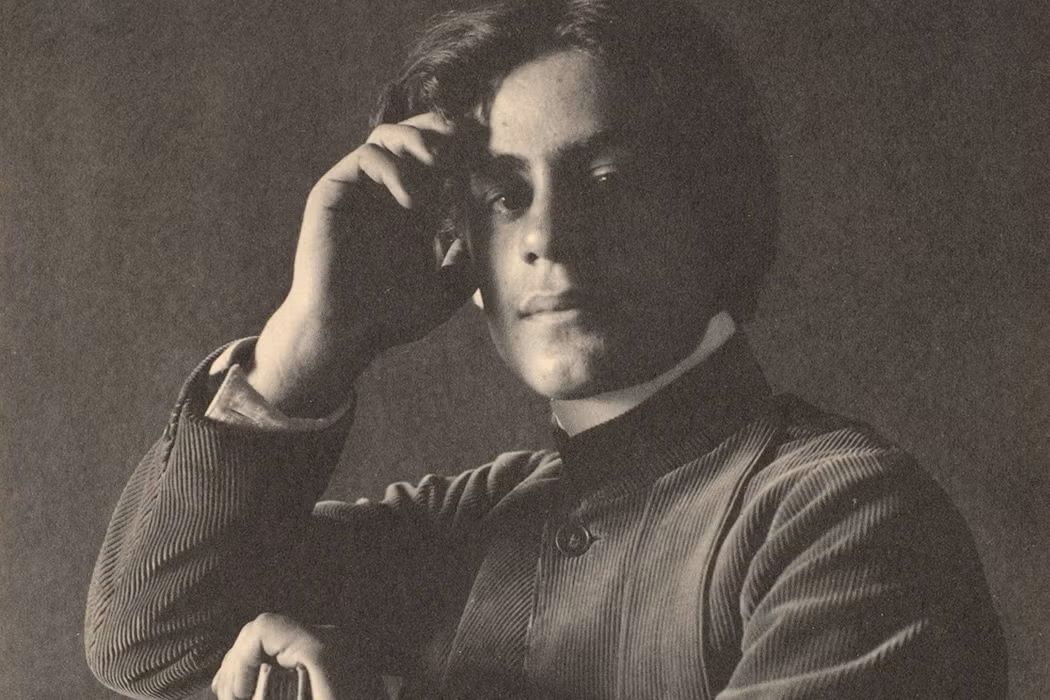story of Kahlil Gibran
The Writer, Poet, Artist & Thinker
 Kahlil Gibran Portrait
Kahlil Gibran PortraitKahlil Gibran was a Lebanese-American literary writer, poet, artist & thinker.
He was born on 6 January, 1883 and passed away on 10 April 1931, at the age of 48.
Arabic name denotes 'Khalil' which was later converted into 'Kahlil' when he was registered in school in Boston, USA. In the Western world, he is mostly known with a slight different first name spelling 'Kahlil', whereas in the Middle Eastern world and Asia, he is known with 'Khalil'.
He was one of the most influential literary figures of the 20th century, especially in the Middle Eastern and Western cultures with his deep thought-provoking poetry and philosophical writings.
This short article explores the journey of this Lebanese-American writer, artist, and poet who left a major mark on the world literature.
Kahlil Gibran - Early Childhood and Family Background
Kahlil Gibran belonged to a small picturesque mountain village in Bsharri, in northern Lebanon (then part of the Ottoman Empire).
He came from a poor family but who were respected Maronite Catholic family.
His father, Khalil Gibran Sr., worked as a tax collector and who had a quick temper issues and gambling habits.
His mother was Kamila Rahme, who came from a prestigious religious background and was the daughter of a Maronite priest.
Kahlil Gibran had two sister siblings (Marianna & Sultana) and one older half brother Boutros.
His early years in Lebanon were marked by financial hardship, yet his mother ensured that her children received proper education and exposure to religious teachings.
The family's circumstances took a dramatic turn when his father was imprisoned for embezzlement in 1891, leading to the confiscation of their property.
Immigration to America and Education
In 1895, seeking better opportunities, Kamila made the bold decision to immigrate to the United States with her children, settling in Boston's South End.
This move proved instrumental in shaping Kahlil Gibran's future.
In America, he was enrolled in an immigrant school, where his teachers noticed his artistic talents and introduced him to the city's artistic circles.
Kahlil's formal education began in Boston, where he learned English and also maintained his Arabic studies.
His artistic abilities caught the attention of Fred Holland Day, a prominent photographer and publisher, who became his mentor and introduced him to Boston's literary and artistic society.
In 1898, Kahlil Gibran returned to Lebanon to study Arabic literature at Al-Hikma College in Beirut.
During this period, he excelled in poetry and started developing his unique literary style.
He returned to Boston in 1902, but tragedy struck as his sister Sultana died of tuberculosis, followed by his brother Boutros death and also later his mother passed away from cancer in 1903.
Early Career and Artistic Development
Upon returning to Boston, Kahlil Gibran established his first art studio and began publishing his writings in Arabic newspapers.
His first book, "Nymphs of the Valley" (1906), written in Arabic, was published in New York.
During this period, he met Mary Haskell, who was his headmistress who became his greatest supporter, both financially and emotionally, throughout Kahlil's life.
Between 1908 and 1910, Kahlil studied art in Paris, where he was influenced by the symbolist movement and the works of William Blake.
This period significantly impacted his artistic and literary style, leading to the development of his distinctive mystical approach.
Kahlil Gibran - Major Literary Works and Success


Gibran's literary career flourished in the 1910s and 1920s.
His most significant works include:
1. "The Prophet" (1923)
- His masterpiece and best-known work
- Sold over 100 million copies worldwide
- Translated into more than 100 languages
- Continues to sell approximately 5,000 copies weekly
2. "The Broken Wings" (1912)
- His first book written in Arabic
- Sold approximately 500,000 copies
- A semi-autobiographical romance
3. "The Madman" (1918)
- His first book written in English
- Sold around 200,000 copies
- A collection of parables and poems
4. "Jesus, The Son of Man" (1928)
- Sold over 1 million copies
- A portrayal of Jesus through various contemporary perspectives
5. "Sand and Foam" (1926)
- A collection of aphorisms and sayings
- Sold approximately 400,000 copies
Writing Style and Themes
Kahlil Gibran's writing style was unique, combining Eastern mysticism with Western literary traditions.
His works often explored themes of:
- Love and relationships
- Religion and spirituality
- Nature and humanity
- Death and rebirth
- Immigration and identity
- Social justice and reform
His prose-poetry style, particularly in "The Prophet," created a new genre that influenced countless writers and thinkers.
His ability to express complex philosophical ideas in simple, lyrical language made his works accessible to readers worldwide.
Personal Life and Relationships of kahlil Gibran
 Kahlil Gibran Younger
Kahlil Gibran YoungerKahlil Gibran never married, but had several significant relationships that influenced his work:
1. Mary Haskell (1904-1931)
- His closest friend and benefactor
- Their correspondence provides valuable insights into his creative process
- She supported his education and career financially
2. May Ziadeh (1912-1931)
- A Lebanese-Palestinian writer
- They maintained a purely epistolary relationship
- Their letters are considered important literary documents
Kahlil Gibran's Legacy and Influence
Kahlil Gibran's influence extends far beyond literature:
Cultural Impact:
- His works have inspired numerous artists, musicians, and writers
- "The Prophet" has been adapted into various art forms, including music and film
- His quotes are widely used in speeches, ceremonies, and popular culture
Academic Recognition:
- Multiple universities have established chairs and programs in his name
- His home in Bsharri has been converted into a museum
- Several literary awards bear his name
Social Influence:
- His writings on social justice and human rights continue to resonate till today
- His views on religious tolerance and universal spirituality remain relevant
- His work bridges cultural divides between East and West
Death and Posthumous Recognition
Kahlil Gibran died on 10 April 1931, in New York City from cirrhosis of the liver and tuberculosis.
His body was transferred to his hometown of Bsharri, Lebanon, where his tomb has become a national shrine.
Before his death, he expressed his wish to leave his assets to his hometown, leading to the establishment of the Gibran National Committee.
Financial Success:
- His estate continues to generate significant royalties
- "The Prophet" alone has generated millions in revenue
- His paintings and drawings command high prices at auctions
Awards and Honors:
- Lebanese government issued stamps featuring his image
- Multiple streets and institutions named after him worldwide
- Inducted into various literary halls of fame
Contemporary Relevance
Today, Kahlil Gibran's work continues to resonate with new generations:
- His writings on love and spirituality appeal to modern readers
- His environmental messages align with contemporary concerns
- His views on religious tolerance are particularly relevant in today's world
Modern scholars recognize him as:
- A pioneer of Arab-American literature
- An important figure in the East-West cultural dialogue
- A significant influence on the New Age movement
Some Famous Linkages With Kahlil Gibran
Many famous people and celebrities' were very fond of Kahlil Gibran's writings.
Elvis Presley used to read Kahlil Gibran's writings. He was a personal fan of his book 'The Prophet'.
Elvis's marked-up copy still exists in Lebanon Museum as well as in Elvis Presley Museum in DusselDorf.
John Lennon from Beatles also used a line of poetry from Sand and Foam (1926), which reads
"Half of what I say is meaningless, but I say it so that the other half may reach you,"
Though it was used in a slightly changed form, in the song "Julia" from the Beatles' 1968 album.
American sculptor Kahlil G. Gibran (1922–2008) was believed to be a relative of Kahlil Gibran.
Kahlil Gibran's most renowned work, The Prophet, was adapted into a film in 2014 and a musical, Broken Wings, based on his novel was staged in London in 2018 by Nadim Naaman and Dana Al Fardan at the Theatre Royal Haymarket.
Political Front
The Katter political family in Australia was also tied to Kahlil Gibran.
It was mentioned in Australian parliament that Kahlil Gibran was a cousin of Bob Katter Sr., a prominent figure in the Australian parliament and former Minister for the Army.
President John F. Kennedy possibly drew an inspiration from Kahlil Gibran's 1925 essay in his inaugural address.
Kennedy's famous line "Ask not what your country can do for you – ask what you can do for your country" reflects Kahlil Gibran's thought process.
Other Recognition
Numerous places, monuments, and educational institutions worldwide have been dedicated to honoring Kahlil Gibran, such as:
The Gibran Museum in Bsharri,
The Gibran Memorial Plaque in Copley Square, Boston,
The Gibran Khalil Gibran Garden in Beirut,
The Kahlil Gibran Memorial Garden in Washington, D.C.,
The Khalil Gibran International Academy in Brooklyn, and
The Khalil Gibran Elementary School in Yonkers, NY.
The Wrap Up - Drawing The Curtain
Khalil Gibran's life story provides many interesting aspects of life.
Out of all his siblings, who probably were more into the ordinary and practical life, most of them remained in oblivion.
However, Kahlil Gibran with his special innate talent of being a writer, artist, thinker and poet excelled to great heights.
Though he started from humble beginnings in Lebanon but rose to worldwide literary fame.
His journey exemplifies the immigrant success story in the US and the Middle East.
His works continue to inspire millions, making him one of the most widely read authors in history.
His writings continue to offer wisdom and insight to readers across generations and cultures.
One of his most popular works, particularly "The Prophet," speaks to the universal nature of his messages about love, life, and human connection.
However, with all the popularity and greats works, at the same time, it is also known that Kahlil Gibran faced criticism from many other conservative segments in Christianity and Islam due to Kahlil's liberal thought processes, radical and rebellious views about life, people, religion and social norms.
His book 'Sprits Rebellious' is an example of his most radical thoughts.
With all the fans and critics, Kahlil Gibran wanted to advocate the unity of all humankind into One. And the concept of 'One' for the Peace of this world.
Even in the present times, when we face multiple challenges of cultural division and spiritual seeking, Kahlil Gibran's writings remain as relevant today as they were when first published.
You may also read article on Khalil Gibran at Wikipedia
You May Also Read More Artists Stories at IdeasBeat
New! Comments
Have your say about what you just read! Leave me a comment in the box below.